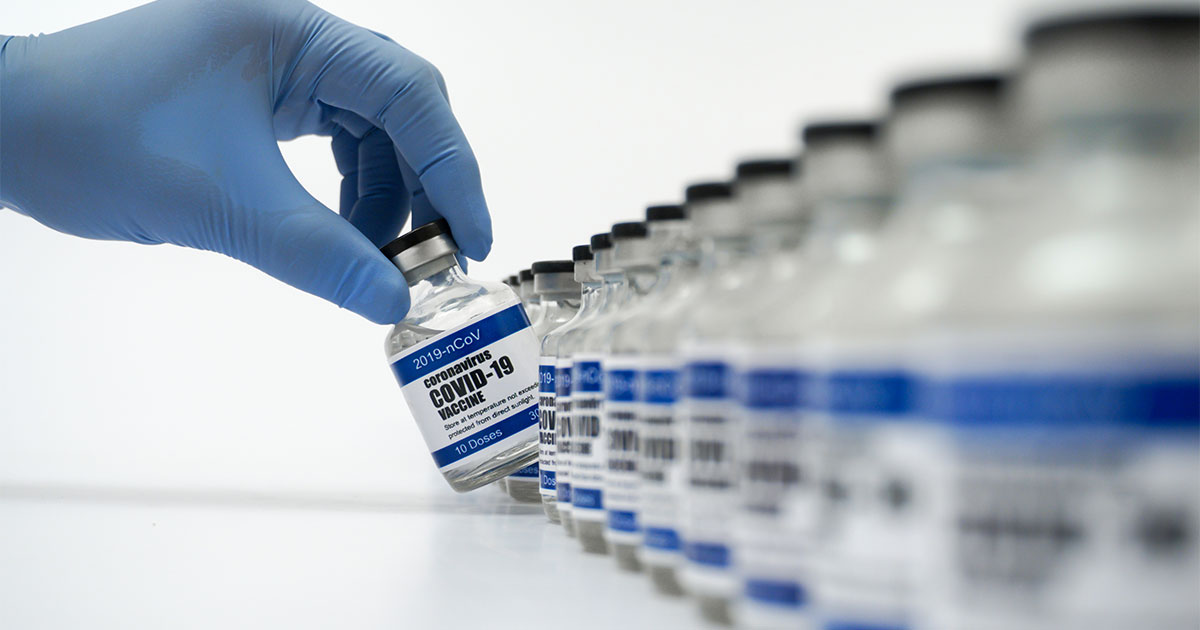Leadership, Logistics, and the Vaccine Rollout

This is the second installment of a three-part series looking at the large-scale efforts in vaccine development, distribution, and education that will be needed ultimately to end the pandemic.
So it begins.
Like the firing of a starter pistol, the U.S. Food and Drug Administration’s emergency approval late last week of the first COVID-19 vaccine has set in motion a massive, all-hands-on-deck effort spanning the United States and the world. The race is on to vaccinate millions upon millions of people.
That operation promises to be unbelievably complicated, but Brad Johnson says that complexity should not be an excuse for holdups and setbacks. The time is now to be bold, innovative, and swift.
“If it takes them nine months to roll it out—to me, that’s a failure. They should be building up everything to do it quickly,” says Johnson, a lecturer of technology operations management at Babson College. “Is there any national emergence bigger than this? No. Nothing is more important.”

At this pivotal moment in the pandemic, we take time to look at the development, distribution, and communications regarding the COVID-19 vaccines, and the role that entrepreneurial leadership plays in this incredibly important endeavor.
“Whether developing the vaccine or creating a supply chain to quickly and effectively vaccinate hundreds of millions of people, you need an entrepreneurial mindset,” Johnson says. “That mindset will help you to overcome the many challenges that will arise with an endeavor that has never been tried before.”
In this second installment of a three-part series, we look at the distribution of the COVID-19 vaccines. The creation of those vaccines was a monumental task, but now a task just as monumental awaits: making sure everyone actually receives them.
A Moon Shot for Medicine
In some ways, distributing a vaccine quickly to meet a pressing need is nothing new in health care. After all, millions of people every year receive the flu shot.
Johnson is quick to point out, though, that the distribution process for the flu shot is long established. “With the flu vaccine, there is already a supply chain set up,” he says. “The challenge with the COVID-19 vaccine is that you are building a brand-new supply chain from scratch.”
Johnson has a lot of experience with supply-chain management. Prior to coming to Babson, he worked for eight years at Wayfair, leaving the company as its vice president of operations. Johnson launched and managed CastleGate Fulfillment, Wayfair’s delivery and logistics service.
When trying to appreciate the magnitude of the COVID-19 distribution process, Johnson is hard pressed to find a historical precedent. For its sheer ambition and scale, he likens it to no less than the moon landing.
“If it takes them nine months to roll it out—to me, that’s a failure. They should be building up everything to do it quickly.”
Brad Johnson, a lecturer of technology operations management
That’s not to say a health campaign is like a landmark NASA mission, but the intricate planning that went into the moon shot, the amount of science, effort, and gumption it entailed, made it an awesome logistical accomplishment that the planners of the vaccine rollout can only hope to match.
“It is that kind of logistical challenge,” Johnson says. “It is a massive undertaking. Think of the amount of effort it will take to vaccinate the 330 million people just in the United States.”
Strong Leadership Required
To make the vaccine distribution succeed, strong central leadership will be needed. “Without strong leadership, there is increased risk of miscommunication and poor coordination across the supply chain,” Johnson says.
That could cause vaccine doses ending up in the wrong places, or not enough doses landing in the right places. Johnson says the Bullwhip Effect, a supply-chain dynamic where inefficiencies and inaccuracies ripple and grow across a distribution channel, is a real possibility.
The results of that would be delays in people getting vaccinated, an outcome that’s unfortunately too easy to imagine. Just consider how erratic COVID-19 testing has been. “We’re nine months into it, and it’s still hard for people to get tested,” Johnson says. “It can’t be like that for the vaccine distribution.”
While many companies, including FedEX, UPS, CVS, and Walgreens, will be involved in vaccine distribution, Johnson says a strong leadership role from the government is critical. A major reason is that it needs to prioritize who gets vaccinated first. Healthcare workers and vulnerable populations must receive the vaccines before the privileged and well-connected. “That decision comes from the top down,” Johnson says. “Teachers deserve it before baseball players.”
Beyond the Supply Chain
There are still other challenges to consider in the vaccine rollout. One that has gotten much attention is how the Pfizer vaccine, the first approved by the FDA, needs to be stored at about minus-70 degrees Celsius. Shipping it entails customized containers, temperature sensors, and lots and lots of dry ice.
That downright frigid temperature might make distribution in developing countries difficult, Johnson says. Fortunately, the temperature requirements for other COVID-19 vaccines that eventually should be FDA-approved will be less stringent. “Having different choices would be beneficial,” Johnson says.
Then, there’s the issue that has nothing to do with the supply chain: trust. No matter how effective the vaccines, no matter how widely available, they won’t work if people don’t even take them.
Johnson believes transparency is needed in the distribution process. He thinks a public dashboard—much like Babson and other colleges used in the fall that detailed their COVID-19 infection rates on campus—could be used to inform people about how many have been vaccinated across the country.
“I think that will help people to trust the vaccine,” he says. “If everyone sees everyone else is getting vaccinated, they will as well.”
The Vaccine and Entrepreneurial Leadership Series
Part 1 — Development: A Monumental Achievement, But Only the First Step
Part 2 — Distribution: Leadership, Logistics, and the Vaccine Rollout (above)
Part 3 — Education: The Final Hurdle: Overcoming Vaccine Skepticism
Posted in Insights






